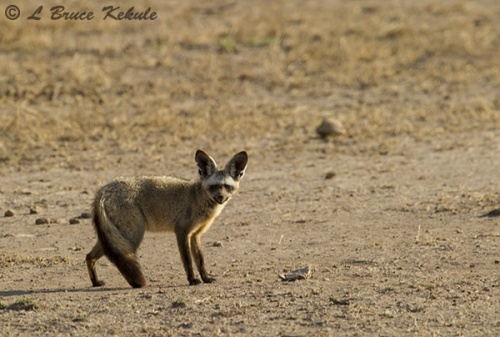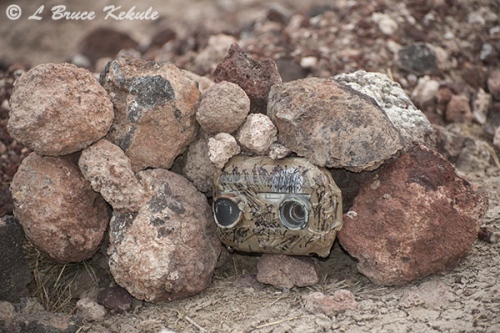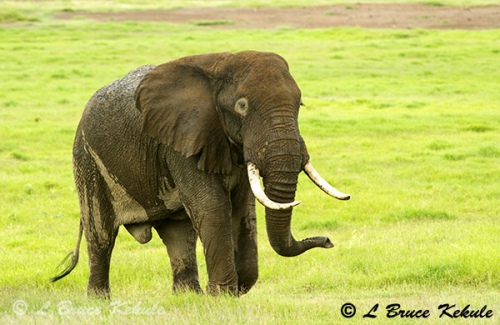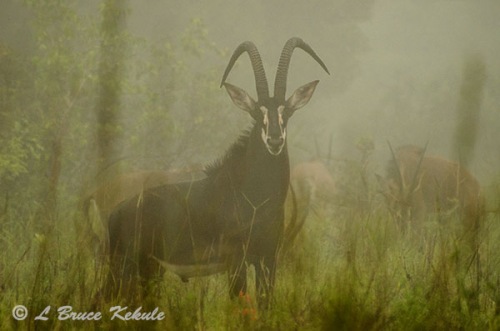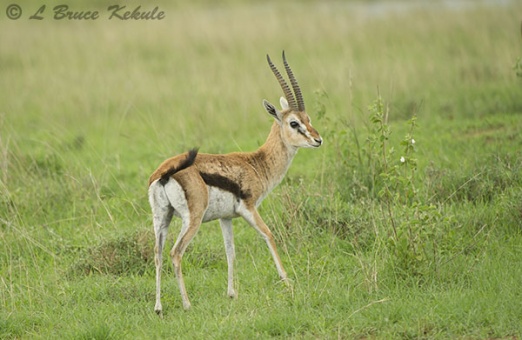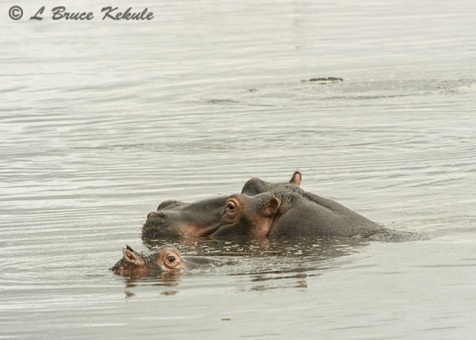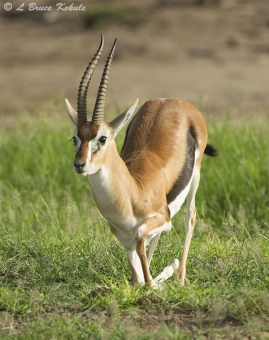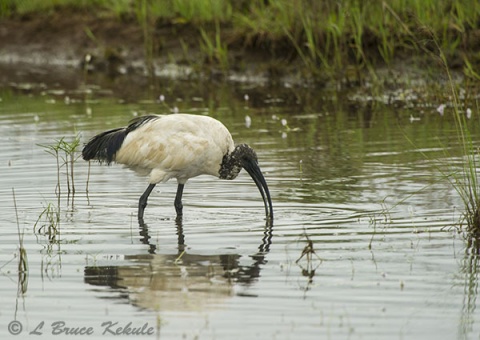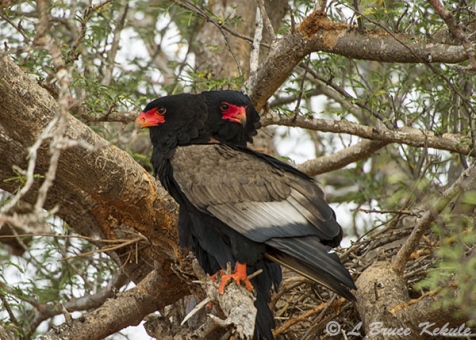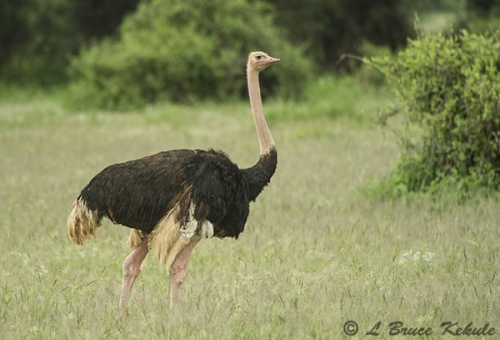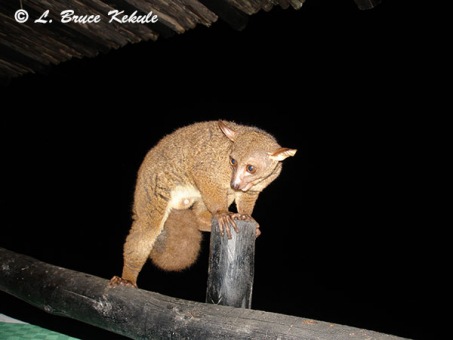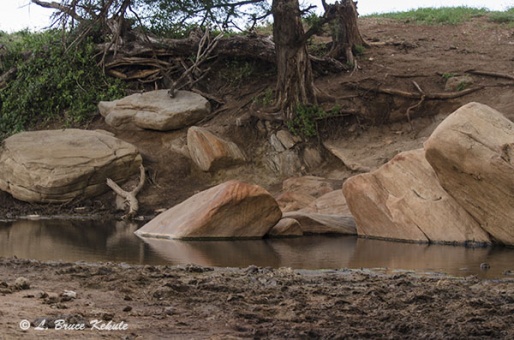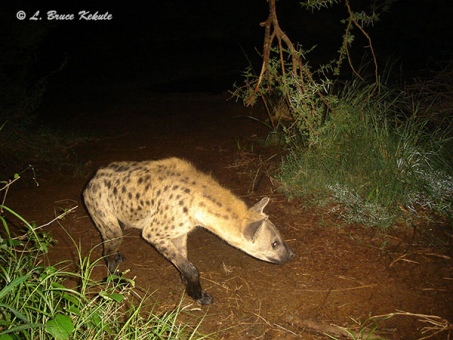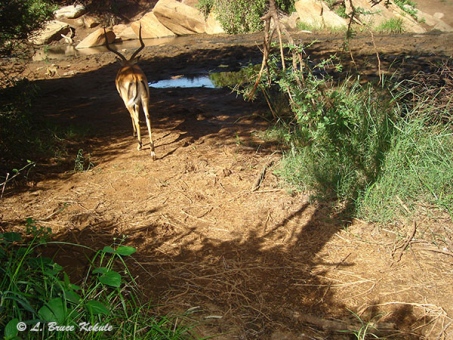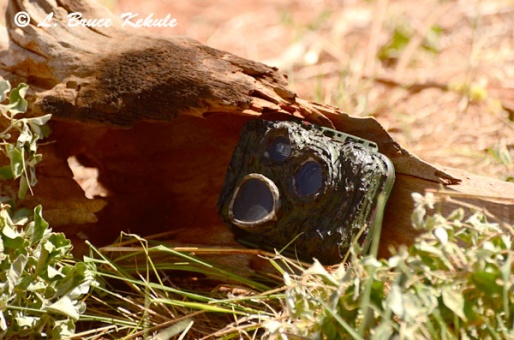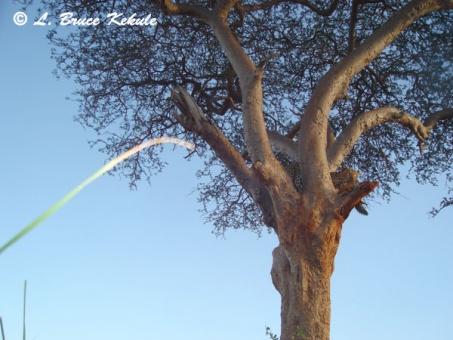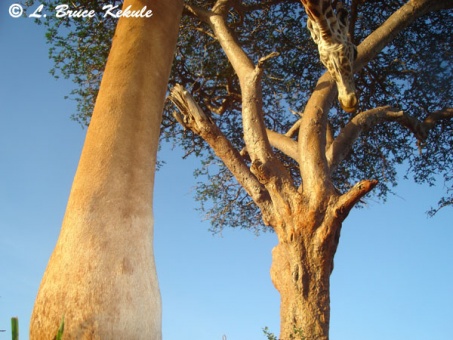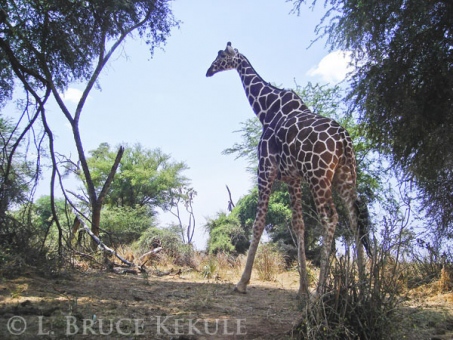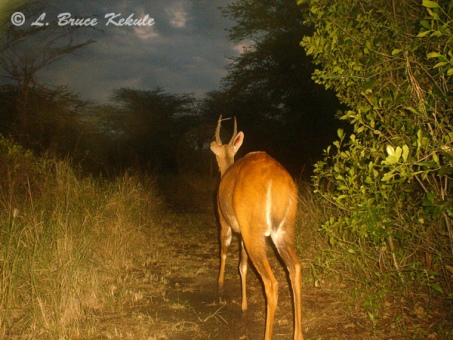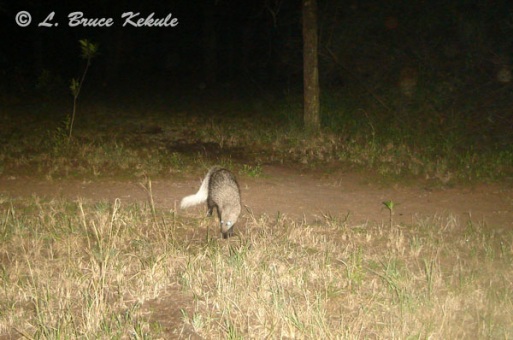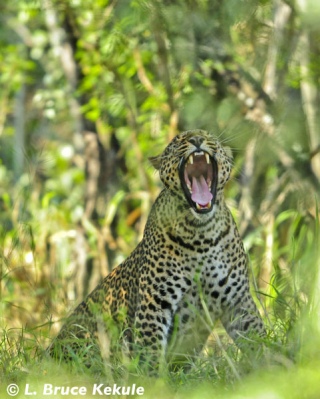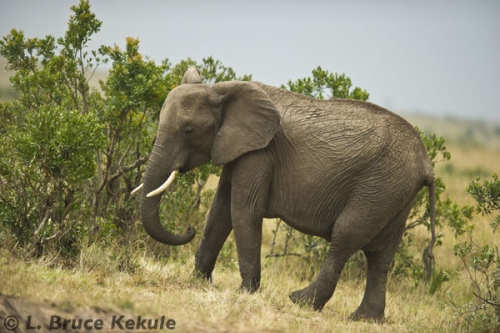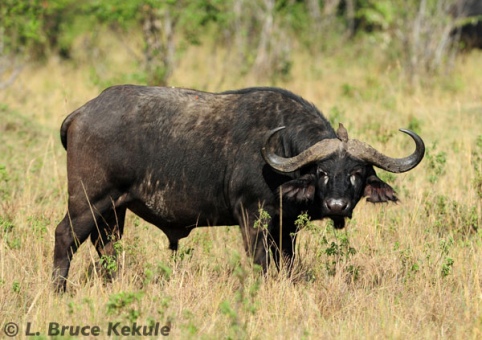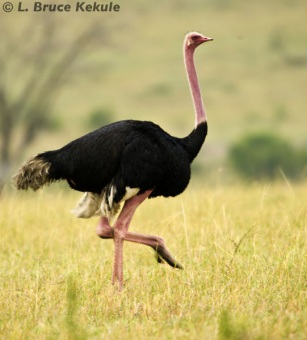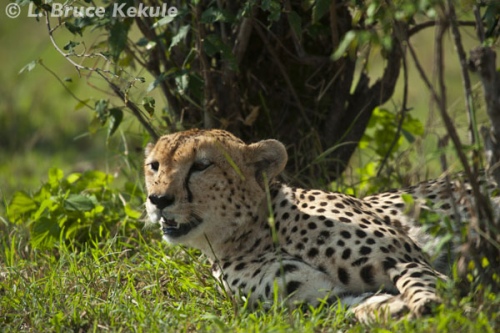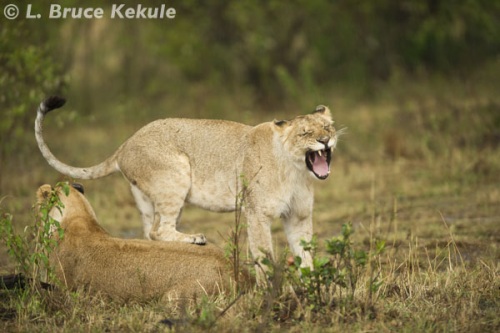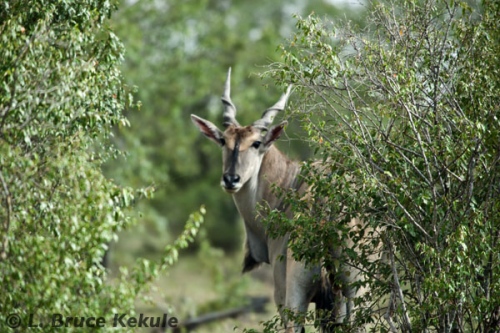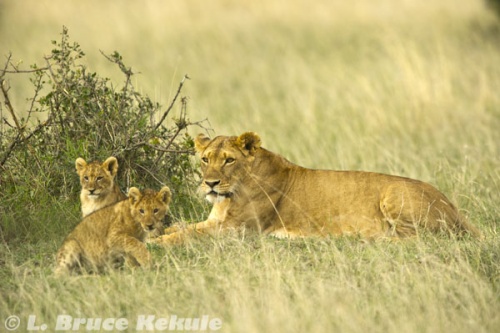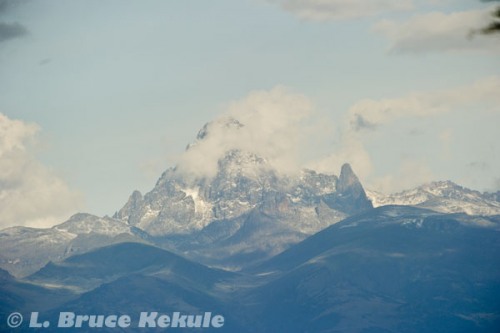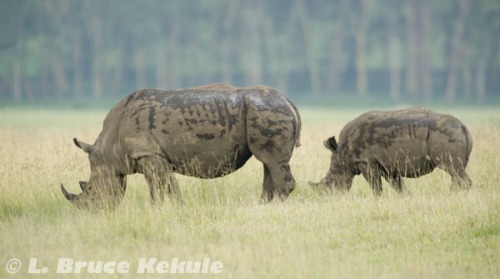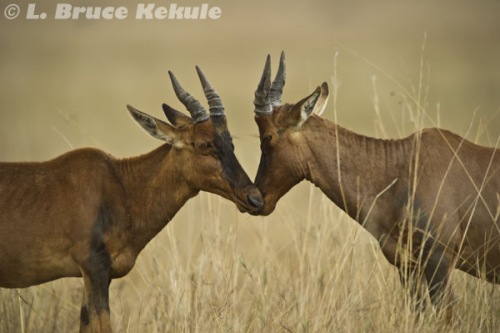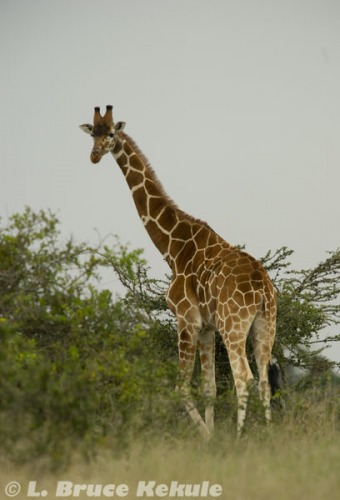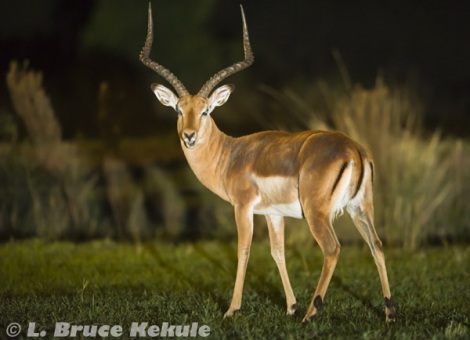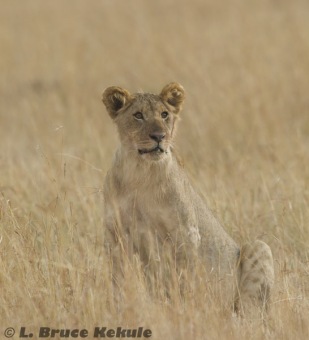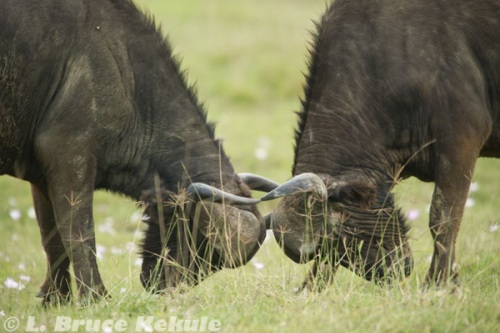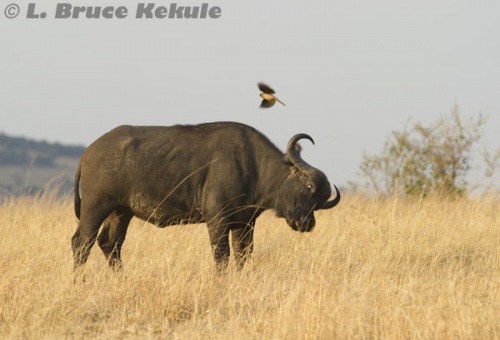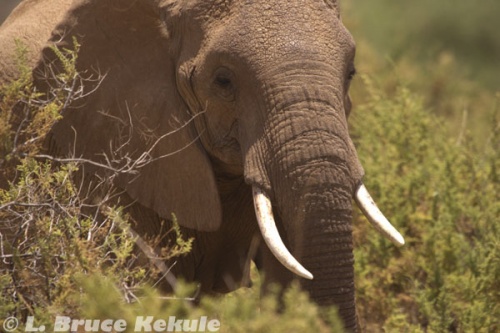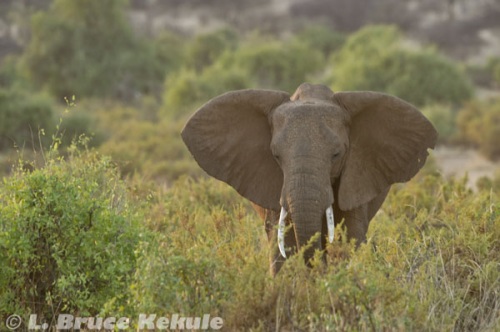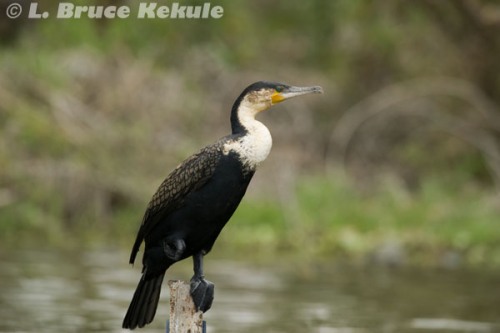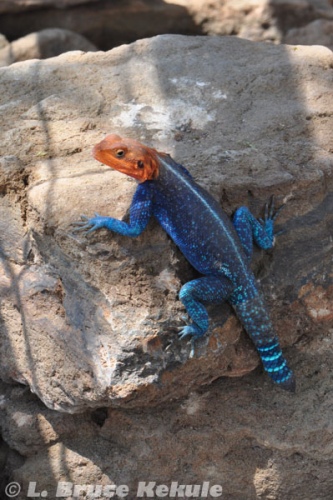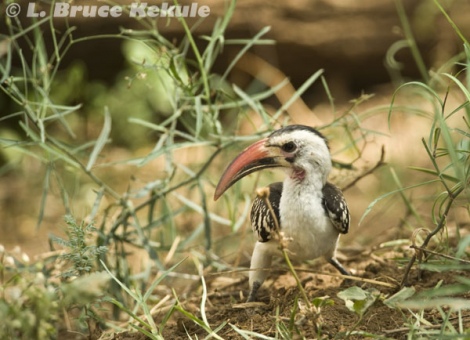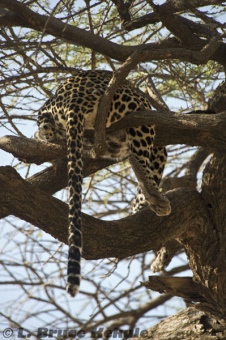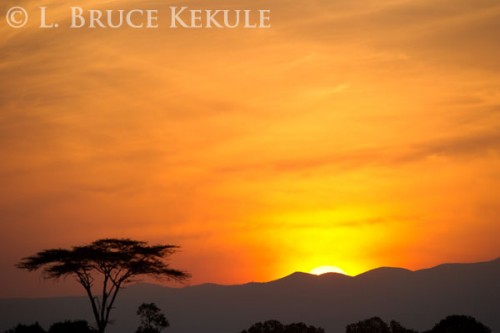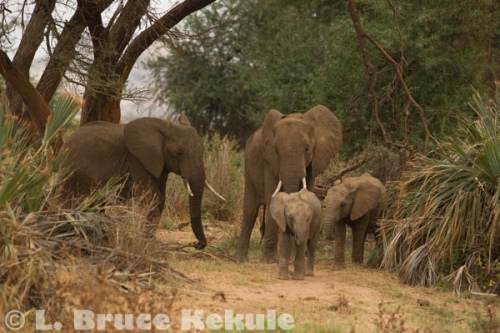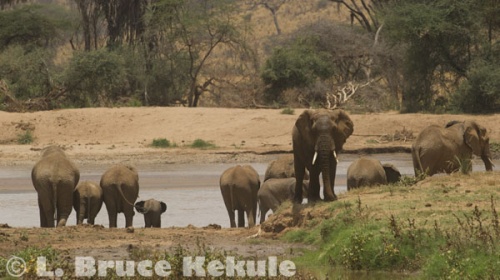Posts Tagged ‘Africa’
Africa Series: Sony S40 catches bat-eared fox
A camera trap’s final stint at a fox den in Amboseli National Park, southern Kenya
Bat-eared fox cub in its den
I took a Sony S40/Plano 1449/SSII/4 double AA externals to southern Kenya in December 2012 to be used in quick set-ups with minimum security (no Python locking cable) mainly to be used by the side of the road. The first location was Amboseli National Park near Mount Kilimanjaro where I captured a rare carnivore: a whole den of bat-eared foxes.
Bat-eared fox adult just outside its den
As me and my driver/guide Patrick Njoroge were on game drive, we noticed two adult foxes running away from their den that was about 10 feet from the road. I got some nice shots of the adults in great light. I decided to leave the cam overnight in some rocks near the ground as the site looked promising.
The other mature fox in the afternoon
While setting up the cam, I heard the pups in the den and one of them actually barked at me. I sat in the truck and waited, and in a few minutes a young one popped its head out shown in the lead photo. I had a great time shooting the little carnivore with my Nikon D3s/600mm.
Fox family checking out the S40
We left shortly thereafter so as not to disturb them and let the home-brew do its work. That night, two adults and four cubs were caught by the S40. The next morning I was elated to see that this family was surviving in Amboseli. I downloaded everything from the card immediately. It’s a good thing I did too…!
Getting closer and not afraid of the flash
Later that day we moved to Tsavo West National Park situated east where I previously had set-up a Bushnell Trophy Cam at a waterhole deep in the park. With no cable, the S40 attached with tape was vulnerable but I thought who would steal a cam way out here. Boy, was that ever a big mistake. That night, a hyena came and took the S40, and the Bushnell recorded it all as seen on my previous post ‘Bad Hyena Night’.
Even the cubs are not afraid
It’s hard to believe an African hyena would actually take my cam. Somehow, the creature must have been attracted to the salt residue left by my hands is the only explanation I have. The next morning on our way out, we looked around but could not find it. We left but I accepted the fact the S40 was gone but it had done a brilliant job of catching the foxes and that was that…!
My favorite S40 shot
I wonder where the S40 is now? Could it be down the hyenas den still tripping? Is it a chew-thing for the hyena cubs? I will never know.
Sony S40 camera trap set in rocks by the road at bat-eared fox den
The moral of this story; whenever you can, always download your card or you could loose a lot….!
Enjoy.
Bad Hyena Night
This is what happens when you get lax….or was it just an oversight…? Needless to say, I lost my great little Sony S40 cam in a Plano 1449 and SSII with double AA externals to some tenacious hyenas. It was a great little cam and took good photos. And yes, it was the S40 hacked by Joe 12-Ringer I won in last year’s camera trap competition held by Camtrapper.com. I took this homebrew to Kenya as a quick-setup cam mainly to be used by the side of the road and hence, there was no ‘Python’ locking cable. Unfortunately, I also lost a whole bunch of photos that the cam took because I used some sticky tape to hold it in position above a Bushnell Trophy Cam. The rest is history.
PS: I do have two spare S40s with boxes and sensor boards that will be built some time in the near future. They are great little cams…!
African wildlife in Southern Kenya
African Safari in May 2012 – Part Two
Africa is not just about the ‘Big Five’. It’s also about all the other amazing creatures and ecosystems that make up the tremendous biodiversity of flora and fauna found here.
Bull elephant just after a rain in Amboseli National Park
It can be said that Kenya is one of the most diverse and best-protected wildlife habitats anywhere in the world where tourists and photographers alike can consistently see and photograph wild animals up-close for the most part.
Striped hyena in Tsavo (East) National Park
However, some of Kenya’s wildlife is not that easy to spot like the rare striped hyena or sable antelope, while others are downright easy such as elephants and buffalo for example.
Sable antelope male in the mist at Shimba Hills Wildlife Sanctuary
Some species have become so habituated to safari vehicles and its occupants, especially lion and cheetah. Most times the big cats simply ignore you. But not all these animals are that tame like the elusive leopard, or even antelope like eland.
Eland bull in Nairobi National Park
Some creatures flee at the first sight of a vehicle and man (years and years of poaching pressure) knowing very well that retreat is the only safe course of action, and humans are not to be trusted.
Bat-eared fox near dusk in Amboseli
Hence, it is not always that easy as some might surmise. It’s about luck too. Some days are stellar while others are just mediocre. But for the most part, it is a photographers dream come true..!
Rock hyrax in Tsavo (West) National Park
While on safari, I shoot everything I see (through the lens of course) until I’m satisfied I have the shot, or the animal has left the scene.
Rock hyrax family in Tsavo
Over the past three years, I have made three trips to the ‘Dark Continent’ and you could say I’m addicted to the place. This trip I visited Amboseli and Tsavo national parks near Mount Kilomanjaro, Taita Wildlife Sanctuary nearby and Shimba Hills Wildlife Sanctuary near the southern coastal city of Mombassa plus Nairobi National Park over two weeks.
Lioness during late afternoon in Tsavo (East) National Park
I traveled some 3,00o kilometers with my good friend and guide/driver, Patrick Mjoroge, a Kenya national. With more than 25 years of experience, he has been an important asset in my photographic quest.
Lioness on the run after prey in Tsavo
Transworldsafaris.com in Nairobi have also been very helpful in setting up my trips. They are truly one of Kenya’s best safari companies and I recommend them to anyone interested in going.
Another giraffe male in Tsavo (East)
I now have accumulated quite a lot of photographs for an up-coming book project about wildlife in Asia and Africa showing a comparison between the two continents.
Giraffe during late afrternoon in Shimba Hills
At the end of the day, the game of wildlife photography is all about how lucky you are. What is around the next bush or bend in the road is the big question?
Zebra taking it easy in Amboseli
I have been very fortunate to visit Kenya but consistency, good photographic technique and equipment plus determination is the real secret to successful wildlife photography, whether it’s in Africa, Asia or the U.S. for that matter.
Thompson’s gazelle in Nairobi
Shortly (December 5th), I leave for Kenya once more (3-week trip) and hope I can close out a few more species still not in the bag like kudu and wild dog that have been very elusive.
Hippo mother and calf in Amboseli
It is hoped all will take pleasure in this photo essay as much as I have writing and photographing it. Enjoy…!
Additional photos while on safari in May:
Nile crocodile in Tsavo (West)
Cheetah on the prowl in Amboseli
Cheetah family in Amboseli
Cheetah on the run in Amboseli
Red hartebeest in Taita Wildlife Sanctuary
Thompson’s gazelle in Amboseli
Black-headed heron in Amboseli
Sacred ibis in Nairobi
Bateleur pair in Tsavo (East)
Glossy ibis in Tsavo (West)
Ostrich in Nairobi
Marabou stork in Tsavo (West)
Grey-headed crane in Amboseli
African fish eagle in Amboseli
Ground hornbills in Tsavo (West)
Sable male in Shimba Hills
Sable female and calf in Shimbe Hills
Cape buffalo in Nairobi National Park
Sony W7 trail cam traps African elephant, giraffe and a bushbaby..!
More camera trapping in Kenya
Elephants and egrets in Amboseli National Park by the side of the road
For the last three years, I have made an annual photographic safari to Africa catching the ‘bug’ as they say. On my first trip in September 2010, I did not take any camera traps along but concentrated on ‘through the lens’ work. It was simply amazing seeing and photographing so many animals including the ‘Big Five’. I was with a group of Thai photographers. After visiting a few of the top protected areas in Kenya for 12 days, and taking more than 90 gigabytes worth of images, you can say I’m now addicted to this place.
In August 2011, I headed a new group of Thai photographers on safari. This time I took a few camera traps hoping to set them in the bush. The first hotel was a tented camp near the famous Masai Mara National Reserve (where the wildebeest and zebra cross the crocodile infested Mara River). The camp has wildlife running all over the place including the rare bushbuck, an antelope found in only a few places in Africa. Other creatures include mongoose and genet. See my previous thread entitled ‘Camera trapping in Africa’.
This year in May, I went to Kenya once again but this time down south to some new locations including Amboseli National Park near Mount Kilimanjaro on the border with Tanzania, and then to Tsavo (west and east) national parks (together they form the largest national park in the world), plus Shimba Hills Wildlife Sanctuary near the coast at Mombasa, and finally Taita Wildlife Sanctuary on my way back to Nairobi. It was once again terrific seeing and photographing some incredible creatures of nature.
Giraffes in Tsavo (West) National Park
This year I also took a W7/1010/SS1 cam with one of my custom ‘elephant proof-boxes’ as a double or back up to the Sony S600 trail cam mentioned in previous stories. Tough restrictions made it difficult to set them up. But at one location in Amboseli NP, there was a tree right next to the road and I quickly got down from the ‘Land Cruiser’ and slipped it on with a ‘Python’ cable with my camouflage sleeves and stuck some grass and leaves around it to break-up the outline.
I left it for two nights and picked it up on the way out of the park. Low and behold, two elephants had passed the cam. The distance was considerable but the sensor still got one shot in good light. I was pleased. We then headed to Tsavo (West) national park for a three-hour drive.
As we moved into the reserve, I found a tree with loads of ungulate tracks crossing the road. It was the same drill: get down and throw the cam on quickly with a Python cable and sleeves. I let this one soak for two nights and picked it up on the way out. A couple of giraffes were caught nibbling on some leaves and the W7 worked well. We then moved further East and I caught elephants but they were reddish from the red-colored clay soil found here.
Elephants in Tsavo (East) National Park: note reddish color from clay found here
We then motored down to what I would say is one of the worst roads I have ever traveled on in my entire life. For more than thirty kilometers, the road was potholed with some large enough to swallow a small car. Hundreds of truck trailers moving in and out of Mombasa on a daily basis (Kenya’s main port on the Southern coast) have destroyed the road and causes huge traffic jams.
It was hell getting through but my driver Patrick Mjoroge was very skilled having driven safari vehicles for more than 25-years. He knew how to weave in and out but I stayed ‘white-knuckled’ for most of the way. I tried to stay cool no matter what the conditions were but it was nerve-racking to say the least.
Male ‘bushbaby’ at the Shimba Hills Resort bar
We finally reached my 4th destination on this trip at Shimba Hills Wildlife Sanctuary past Mombassa. Being near the coast, it was lush and green unlike the hot dusty plains inland. The forest was thick but due to frequent patrols by rangers, I could not slip a cam in.
That night as Patrick and I were having our sun-downers and dinner, a male ‘bushbaby’ showed up at the bar. I immediately went to my room and got the W7. These small primates are semi-habituated and addicted to bread. I set-up my cam and left some bait. It did not take long to capture some candid camera trap shots.
Bushbaby: one of Africa’s smallest primates
In the event I travel to Africa again, I will surely be taking a couple DSLR trail cams and a few video cams. The opportunity to trap Africa’s exotic creatures on digital is great and I look forward to visiting Kenya once again. I hope those interested will enjoy this thread.
Camera trapping in Tsavo (West) National Park, Kenya
Trail Camera catches hyena, waterbuck, impala and baboon
Sony S600 trail camera at a stream in Tsavo (West) National Park
Before I departed for my annual safari to Kenya during May of this year, I decided to take my trusty Sony S600 trail cam with a Snapshotsniper SSII board in a Pelican 1010 case hoping to put it out in the field.
Stream in the interior of Tsavo (West) National Park
It is small and I knew I could depend on it to catch some interesting wildlife shots. Prior to trapping my ‘ghost leopard’ in Tsavo (East) with this cam, I visited Tsavo (West) National Park, southern Kenya.
Camera trapper testing S600 trail cam
One day while out on a ‘game drive’, my driver/guide Patrick Mjoroge and I stopped for a pit stop near a bend in a small stream close to the road deep in the interior. I got out to stretch my legs and walked on down to have a look around. There was a large group of baboons nearby and they were headed our way.
Waterbuck passing the cam on the first night
There were several trees next to what looked like a game trail by the little waterway so I quickly set-up the S600 using a ‘Python’ locking cable with my camouflage sleeves in conjunction with a ‘Snapshotsniper’ Pelican case locking bracket. I threw down some salami, meat and bread from dinner the previous night as bait. It was worth a try. We departed and left the cam for an overnight soak.
Hyena on the first night eating the bait
The next morning, we returned to the stream to check on the cam and for a boxed breakfast packed by the hotel consisting of two hard-boiled eggs, some bacon, sausage, bread, butter and jam, an apple, some juice and water. It was better than nothing but my mandate was to leave at dawn for early morning light, and since we were at least thirty kilometers away from the hotel, breakfast was out of the question.
Baboons caught on the second afternoon
The bread was not that good and the bacon was cold and greasy, so I decided to top-up the bait left the previous afternoon and left the cam out for one more night. No one could see the set-up from the road and I knew it was safe.
The same hyena the second night
The next morning as we were leaving the park to go further east, we headed straight to the stream to pick-up the cam. As I scrolled through the images, it was evident the bait had worked extremely well. A hyena visited the first night and ate everything except the salami (weird), and then came again the next night for the bacon and bread. I was extremely happy when I also saw a waterbuck, impala and baboon walking past the cam.
Impala passing the cam on the second day
Wherever there are baboons, there are leopards. I vowed that if I ever return to this place, I’ll bring one of my DSLR camera traps plus a small video-unit like a Bushnell Trophy Cam or one of my homebrew video units. Success is always sweet and I hope everyone enjoys this set-up.
African leopard camera trapped in Tsavo East NP, Kenya
‘A Needle in a Haystack’: A Sony S600 catches a leopard eating prey
Sometimes, things happen that are unexplainable and spooky. That goes for the following story. I have just returned from Africa and while on safari, was able to slip two camera traps in the bush (a Sony S600 and W7) at several locations. But the weirdest setup was in Tsavo East National Park in Southern Kenya not far from the infamous ‘Man-eaters of Tsavo’ site.
To get a perspective of how huge this place really is (Tsavo – East and West) is the largest national park in the world at more than 43,000 square kilometers (the size of Wales, Israel and New Jersey). Finding a leopard is like finding the proverbial ‘needle in a haystack’.
Leopard’s prey: A wild cat and a black-backed jackal
One morning as my companion, driver and guide Patrick Mjoroge and I were out on a game drive (as they are known), he spotted two leopard kills hanging in a tree by the side of the road. We stopped and saw a wild cat wedged on top of a jackal in the branches, and both ‘dead as door nails’.
Sony S600/1010/SSII camera trap on the ground at the leopard tree
The big cat for a later meal stashed these two small predators and so we waited for a while but in vain. Then it dawned on me: why not just throw my S600/SSII/1010 on the ground in a hollow piece of dead wood pointed up at the big tree. It was worth a shot! Later that day, we drove by several times but the leopard was no-where to be seen.
A full-size image of the African leopard in a tree eating its prey
The carrion was still there so I decided to let it soak overnight until the next morning thinking the carnivore might come at night to eat its prize. I took a few shots of the hanging dead and the set-up, and we departed quickly not wanting to hang around obviously. The leopard on the ground is extremely fast and I was not sure how close it might be waiting, and we might just turn into dinner.
Bright and early the next morning, we drove directly to the tree and found the two kills gone. A small tree branch had fallen right in front of the cam and I thought I had missed the cat for sure. As I scanned through the images, I could see nothing but a large leg in several frames. A giraffe had almost stepped on the cam before we arrived and I could see its head up close to where the kills had been. I was a bit disappointed.
Giraffe at the leopard’s tree
Then, I decided to scroll through again and noticed one frame was darker just before the giraffe shots. I zoomed in and almost jumped out of the truck. Low and behold, I saw spots in the crotch of the tree and then saw the leopard’s head looking down towards the cam with the jackal in its mouth. The big cat had visited late in the afternoon and the background sky was nice and blue. I was speechless for a few moments until I could talk again.
Giraffe very close to the S600
I began jumping up and down in the back until Patrick told me to calm down. I showed him the shot and we both began celebrating this remarkable camera trap event. It definitely was worth several rounds of drinks or ‘sundowners’ as they are known in Africa later at the bar in the tented-camp.
Leopard close-up eating the jackal
Weird is an under-statement and the ‘spirits of the wild’ had answered my wishes. I have cropped and enhanced the leopard shot so it can be seen quite clearly. Remarkable is all I can say and the little S600 did a herculean job of catching a ghost!
More set-ups to follow: The S600 also traps hyena, baboon, impala, waterbuck, and the W7 catches elephant plus a bushbaby in a hotel bar getting the largest and one of the smallest mammals found in Africa. It was an amazing trip to the ‘Dark Continent’ as it was known in the old days, and hope everyone enjoys these camera trap photographs.
Camera trapping in Africa
Capturing wildlife by camera trap while out on photographic safari
Reticulated giraffe in Samburu National Reserve: A lucky capture..!
In September 2010, I went on a photographic safari to Kenya’s protected areas including the Masai Mara National Reserve during the annual wildlife crossings at the Mara River, and then on to Lake Nakuru National Park and Samburu National Reserve. It was difficult to set trail cameras as the laws are very strict about leaving the vehicle while out on safari.
Finally, on the next to the last day, I got a quick chance to slip a camera in the bush off a dirt track by the river in Samburu. After three hours, my guide and driver said we had to retrieve the cam. Low and behold, a giraffe had passed the Sony P43/Bigfoot/1040/’C’ externals. It was a fluke and the shot shown here was the best of two. The lowdown set really enhances this very tall even-toed ungulate.
A rare male bushbuck during late afternoon in Siana Springs Tented Camp near the Masai Mara National Reserve
Then in August 2011, I was back in Kenya for another 12-day trip and the first three days was spent at Siana Springs Tented Camp next to the great Masai Mara reserve. The amazing thing about this place was the bushbuck, a very rare antelope, is found on the grounds. I asked for permission and set out three traps. After a couple of nights, a Sony S600/1020/SS1 trapped a ‘male bushbuck’, an African mongoose and a large-spotted genet. On another cam, I got a female bushbuck.
Male bushbuck camera trapped at night on the grounds of Siana Springs
On my older P43/Bigfoot/1040 with ‘C’ cell externals, I trapped a night patrol ranger as he passed by showing his boots, long coat and rifle….amazingly, it is a pre-64 Winchester Model 70 Supergrade in .458 Magnum ‘African’ model with express sights and a beautiful select walnut stock. What a rifle to have out on night patrol?
Night patrol ranger with a .458 Winchester M70 ‘African’ model. A rare firearm left over from the old days of hunting safaris
Some rich American hunter left this rifle with the old boy who was previously a tracker and guide for safari hunters in days gone by. I use to be a gunsmith and built many rifles from old shot-out Model 70s and Mauser 98s. I felt a bit of nostalgia, as this was my favorite caliber and I used a .458 Model 70 when I hunted with a gun here in Thailand but that was 25 years ago, and is another story. I’m still a hunter at heart, just switched from Winchester to Nikon, Minolta, Canon and Sony.
Female bushbuck along a trail on the grounds at Siana Springs
I’m off to Kenya once again on May 1st armed with my big Nikon D3s and a new Nikon 200-400 VR II telephoto lens. I will also be taking three camera traps and hopefully I will be able to set a few cams here and there as I know some tented camps usually have wildlife running around the grounds…plus the guards…..hmmmm!
White-tailed mongoose, a common carnivore
Large-spotted genet, another common predator
These three cams are the ones I’m taking with me to Kenya. The two in the back are Sony W7s in Pelican 1010 cases with Snapshotsniper SS1 control boards, and one in front is a Sony S600 in a Pelican 1010 with a SS1 control board. These cams are small and light, and easily packed in my luggage. I hope I can set them up…..that is the big question??
Camera traps ready for Africa
Africa Revisited: Photographic safari to Kenya – 2011
Photographing Africa’s ‘Big Five’ and other amazing creatures of nature in Kenya’s Siana Springs Conservancy, Masai Mara National Reserve and Nairobi National Park
‘In memory of George Ndungu, my driver and guide who passed
away from malaria shortly after this safari’
It is said: “a visit to Africa sometimes becomes an addiction”. I got snagged on my very first trip in 2010! Kenya’s remarkable wildlife and natural ecosystems are unforgettable and hence, one can become hooked. I now have the so-called ‘African bug’. On my first safari to Kenya’s vast protected areas, it was an exciting event for me and a dream come true. I decided then that I would return at least once a year to photograph what is undeniably one of the top wildlife photography places on the planet.
Leopard cub in dry streambed (donga) in the Masai Mara National Reserve
During the early part of 2011, I arranged a safari with the same company used in 2010. They are Transworld Safaris Kenya based in Nairobi. Sati Lota, the Tours Manager, was very helpful in planning the trip scheduled for mid-August. A group of five Thai photographers would join me on this trip. All the required fees, air tickets, visa to Kenya and other essentials were taken care of three months before departure to the Dark Continent.
Mother leopard yawning in the shade in the Masai Mara
When August 16th finally rolled around, the team and I met at Suvarnabhumi Airport and boarded Kenya Airways just after noon. The flight was eight and half hours long and we arrived around 7pm. We quickly zipped through immigration and customs and were met by Patrick Njoroge and George Ndungu, the two drivers used from 2010. They had proven to be expert tour guides and Sati was kind enough to arrange for them plus two 4X4 Toyota Land Cruisers for our safari. After getting stuck several times in a van last year on wet greasy roads, I insisted on four-wheeled vehicles this time around. It proved to be the right choice as it did rain quite a few times making the roads tough in places.
African elephant in the Masai Mara
We were whisked away to the Ole Sereni Hotel not far from the airport and put up for the night. It is absolutely dangerous to drive around Kenya’s back roads during darkness so we rested up for the long 6-hour drive the next morning to the Masai Mara National Reserve in the Southwest near the border with Tanzania.
African Cape buffalo in the Masai Mara
The next morning after breakfast, we were on our way out of hectic Nairobi and stopped at a supermarket to buy foodstuffs and some green peas to fill our beanbags. This is very important for a steady support while photographing wildlife from the Land Cruisers’ windows and open top. After that, it was on the road again up to the rim of the Great Rift Valley and down to the massive valley floor. The main town is Narok and it is a trucker’s waystop, and a very busy place.
White rhino in Nairobi National Park
Off again and as we got nearer to the Masai Mara, the dirt track became rough. The skies were cloudy and the temperature was pleasant but the dusty pot-holed road began to wear us down quickly. We stopped at a trinket shop that gave us some relief to stretch and relax. After a quick cup of coffee, we were on the road again. As we got closer, a herd of zebra jumped across the front of the truck and I quickly pulled out my medium camera and fired off a few shots. As the light was harsh, it was just a practice run getting warmed up for the safari, and testing my new Nikon D7000 camera and 70-300mm VR lens that also has great video capability. I wanted to record motion and behavior this time around to be used in wildlife presentations I do from time to time.
Old male lion in the Masai Mara
We finally arrived at our first hotel, the Siana Springs Tented Camp in the Siana Springs Conservancy, a protected area next to the Masai Mara. This place was pleasant and the rare African bushbuck thrives here coming out on the hotel grounds to munch the fresh grass. Lunch was being served so we ate and then moved into our tents that were very comfortable. That afternoon, everyone jumped into the land cruisers and we were off for our first game drive. Later that night we had a wonderful dinner as the temperature dropped to about 12 degrees Centigrade, and we all slept like logs after the long haul from Nairobi. It was absolutely marvelous and we were impressed with the food, professional service and management run by Richard Siele, a Kenyan national.
African bushbuck in Siana Springs Hotel grounds
As we moved into the park, gazelles and zebras were grazing on the lush grass with an ostrich here and there. Close to the end of the day, we bumped into a herd of Kenyan giraffes (also know as the Masai giraffe) in beautiful afternoon light. I now have three species of giraffe including the reticulated and the rare Rothschild giraffes photographed the previous year. We also managed to catch some black-back jackals out hunting for prey. It was a great start and we all agreed to do another game drive the following morning.
Thompson’s gazelle in Siana Springs Conservancy
At 6.30am after breakfast, we were off into the conservancy once again hoping to bump into lion or leopard but they remained elusive. After an hour of driving around, we found a large group of baboons out hunting in the crisp morning light. And then a male solitary giraffe was nibbling the treetops as the sun peaked over the hills. I got some amazing photos and video. Shortly after that, a small family group of elephants was spotted so we moved in closer. The huge gray beasts paid no attention to our vehicles. The beauty of this place; there were no other safari companies doing game drives here. We had the whole place to ourselves unlike what we were about to see the next few days in the Masai Mara.
Ostrich in Siana Springs
We left Siana Springs for a hotel near the main gate of the Masai Mara National Reserve. It was decided to go straight into the park for a quick look. After several kilometers, we saw a group of safari vans parked in a semi-circle around a tree so down we went. Three cheetahs (a mother and two cubs) were sleeping at the base of the tree. I was able to get some frame filling shots of the three-some. After some time, the group decided to check-in to the Sentrim Mara Tented Camp, which was very much different from our previous accommodations. The surrounding area was dry like a desert unlike Siana Springs which was green and crisp.
Masai giraffe also known as Kenyan giraffe in Siana Springs
Over the next five days, our daily excursions into the reserve where we met with some terrific African wildlife scenes. We saw lion, cheetah, hyena and a jackal on several kills, a few solitary male lions, buffalo, herds of elephant, the shy Eland (the largest of the African antelope) plus baboon, ground hornbill, vulture, secretary bird and of course the massive herds of wildebeest, zebra and antelope.
Cheethas on a kill in the Masai Mara
Our departure date came and we left the reserve, but this time with a bit of disappointment. At one cheetah kill, there were almost 50 vehicles on the road all locked-in a traffic jam. Most operators now have short-wave radio and keep in touch with each other. When something of great interest like lion, leopard or cheetah is seen, the vans and 4X4s’ coming rushing to get a glimpse of the spectacle as sightings are normally short. It has now become quite hectic in many places, especially the immense river crossings on the Mara River during August-September, the peak season.
Lions on a kill in the Masai Mara
Our next stop was back in the capital where we entered Nairobi National Park for a half-day safari. This park is right next to the airport and our hotel, and has some interesting creatures including lion, leopard, black and white rhino, plus many other classic African animals except the elephant. We got white rhino just inside the gate to make-up the ‘Big Five’ for all of us. We also got an old lazy male lion in the shade, and some African spoonbills, some of Africa’s rarest birds. The park provided a great time and loads of photographic images at the tail-end of the safari.
Hyena and jackal on a kill in the Masai Mara
At the end of the day, we headed back to the hotel. The next day we did a little shopping and then boarded the flight home to Thailand in the evening. Looking back, it was once again a great opportunity to observe and record Kenya’s superb wildlife and habitats.
Cheetha resting on the Masai Mara plain
I have already made arrangements to do another safari next year but at new locations in southern Kenya, which will include the famous Amboseli, Tsavo and Simba Hills national parks not far from the iconic Mount Kilimanjaro, Africa’s highest mountain. I will spend about two weeks chasing after Kenya’s impressive wildlife and truly look forward to this adventure. I now have the African bug!
Safari group from Thailand in August 2011 on the Masai Mara
*************************************************************************************
Additional photos from the 2011 Safari
Red Hartebeest in the Masai Mara
Lion female stretching in the Masai Mara
Playful lion cub in the Masai Mara
Elan bull in the Masai Mara
Zebras in the Masai Mara
African spoonbills in Nairobi National Park
Little bee-eater in Nairobi National Park
African lilac roller in the Masai Mara
The ‘Big Five’ in five days – Part Three
Additional photographs acquired on my first African Safari in 2010
Mother lion and cubs in Sweetwaters Game Reserve
Mount Kenya taken from Sweetwaters early in the morning
Nile crocodile by the river in Samburu National Reserve
Zebras grazing in Sweetwaters grassland
Wildebeest and zebra crossing the Mara River during migration
White rhinos in Lake Nakuru
Another white rhino in Lake Nakuru
Waterbuck female in Lake Nakuru
Topi antelope showing affection in Masai Mara
Reticulated giraffe in Sweetwaters
Impala buck at night in Sweetwaters tented camp
African hare at night in Sweetwaters tented camp
Female lion on the Masai Mara
Griffon vulture in Sweetwaters
Grevy’s stallion in Samburu
Giraffes at a waterhole in Sweetwaters
Cheetah male resting in the Masai Mara
Cape Buffalo bulls sparing in Lake Nakuru
Buffalo bulls sparing
Cape buffalo and oxpecker in the Masai Mara
Black-backed jackal pair in Sweetwaters
An elephant in Samburu
The same elephant
And the elephant’s rear end
Great cormorant in Lake Nakuru
Kudu cow in Samburu
Gamma lizard in Lake Nakuru with a ‘regenerated tail’
African painted stork in Lake Nakuru
Painted storks in Lake Nakuru
Red-billed hornbill in Samburu
Female leopard in Samburu
Tail-end of a male leopard on the last day of the safari in Samburu
A Kenyan ranger at a truck-stop near Samburu
“They mean business and shoot to kill any poachers who enter the park”
Marabou storks in Lamu Island, East coast of Kenya
Northern Carmine bee-eaters in Lamu Island, a World Heritage Site
And that closes out this safari which was an amazing wildlife photographic adventure for me. I hope that everyone has enjoyed these images. In the works is my safari to Kenya once again in August of 2011, and I will post this very soon. Please comment and your feedback is always welcome.
The ‘Big Five’ in five days – Part Two
Africa’s great wildlife adventure – continued
Sunrise over Mount Kenya at ‘Sweetwaters’ Wildlife Reserve
The safari so far had been hectic and we had taken loads of photographs. On day seven, our next destination was a private reserve not far from Mount Kenya in the central provinces. The weather was crisp and chilly when we arrived at ‘Sweetwaters Game Reserve’. As we were checking into the lodge, a small herd of reticulated giraffe visited the waterhole next to the hotel. We left our bags and departed for our first game drive and saw more giraffe plus wart hog and zebra.
African fish eagle grabbing a fish – this was a setup where the locals call the eagles in and as they swoop down, the photographer is suppose to catch them in mid-flight. It was not easy and I burned a lot of card space but got one shot. Not easy!
This lodge is a tented camp and the services are amazing. In each bed, a hot water bottle is placed under the covers by the staff in the evening as the temperatures can sometimes drop dramatically during the night close to freezing. Mount Kenya is snow-capped year-round and the weather is always very pleasant here. The mountain is a beautiful sight when the cloud cover clears.
That night at dinner, a small herd of white rhino arrived followed by a family unit of elephant. Just about everyone left their dinner to photograph the huge herbivores. That night, I photographed a male impala that jumped the electric fence to nibble on the soft grass inside the hotel grounds.
Lion pride on the savanna
The next morning, I was up at the crack of dawn setting up my camera with a wide-angle lens to shoot the sunrise with the Mount Kenya range in the background. At 6:30am after a quick cup of coffee, we departed for the morning drive. We bumped into a mother lion and two small cubs. The female had a collar with a radio transmitter and was being monitored by the park’s research staff.
We left after lunch for the last leg of the safari. Our destination was several hundred kilometers to the east and Samburu National Reserve was entirely different from the three previous locations. It was lowland desert; hot, dusty and dry but still loaded with wildlife. The Samburu Game Lodge was very comfortable and located at the banks of the Eweso Nyiro River.
As we entered the park, a herd of giraffe crossed in front of us followed by a large herd of elephant that went down to the river for a refreshing drink and cooling bath. The African giants then sprayed dust over their backs to ward off insects.
Leopard mother and cub in Samburu National Reserve
Over the next two days, we managed to get leopard once again. This time it was a mother and cub feeding on a little male dik-dik, Africa’s smallest antelope. We also photographed Grevy’s zebra, giraffe, waterbuck, gemsbok and gerenuk plus the dik-dik. Elephant were everywhere and easily approached.
When the rains came earlier this year, the river overflowed its banks and washed out the only bridge in the park. We were not able to visit the other side where the lions and buffalo live. There were many crocodiles in this river and two would come up at night into a closed pen next to the bar in the lodge.
On our departure, we saw a large group of vehicles surrounding a tree and decided to investigate. It was on the way out. Up in a tree, a male leopard was sleeping off a previous kill.
African elephant herd in Samburu
It was strange how we bumped into a leopard on the first day and on our day out. The leopard is considered to be the toughest to see and photograph while on safari but we were lucky. The ‘spirits of the wild’ had smiled on us.
The long ride back to Nairobi took about 6 hours and we finally arrived at the hotel tired, dusty and hungry. The next morning we flew to Lamu, a World Heritage Site on the northeast coastline for some rest and sightseeing. This old town was a port during the slave-trading days and its rustic appeal off the beaten track was interesting.
Elephant family group by the Eweso Nyiro River in Samburu
These events are etched in memory and I know I have caught the African bug. I am leaving on another photographic safari to Kenya to catch the ‘Great Migration’ and when I return, will post a new story.
Such is the life of people hooked on photographing anything wild. It is the ultimate hobby or profession, and if you get a camera and start shooting Mother Nature’s creatures, do be prepared; it can be become an addiction.
A note to all who follow my website: I’m leaving for Africa in a few hours and ran out of time to finish this post. When I get back, I will add some additional photos of this amazing safari.



